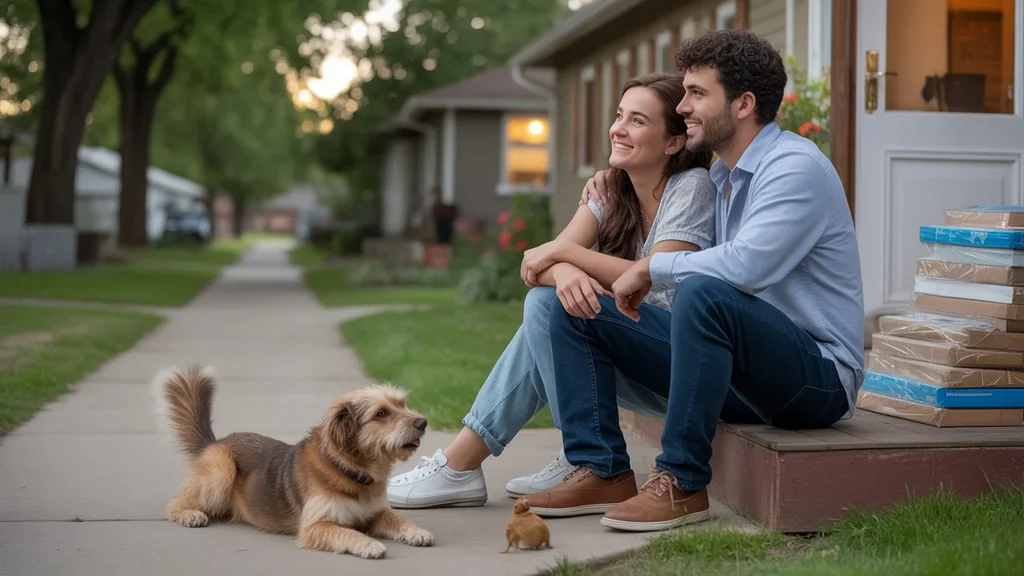The Housing Market in Arvada Today

As of 2025, the housing market in Arvada, Colorado remains competitive, with steady demand and modest inventory. Located just northwest of Denver, this growing suburb attracts a diverse mix of young professionals, families, and retirees seeking a balanced lifestyle. New apartment complexes and single-family developments continue to rise, especially near downtown and the Arvada Ridge light rail station.
While the pace of price growth has cooled some since the early 2020s, housing costs in Arvada still exceed national averages. Buyers and renters alike can expect to budget a significant portion of their income toward housing. Still, many residents find the city’s strong job market, good schools, and outdoor recreation worth the premium.
Renting in Arvada: What’s Typical?
Arvada renters can expect to pay around $1,650 per month for a basic 1-bedroom apartment or $2,100 for a 2-bedroom as of 2025. Newer, amenity-rich units near the city center often command rents 20-30% higher. More affordable options exist in the northwest neighborhoods of Arvada, where a 1-bedroom may cost closer to $1,400.
While exact rent trends fluctuate seasonally, analysts expect prices to rise 3-5% annually in the coming years, outpacing inflation but trailing the surges seen in the early 2020s. Rental inventory remains tight, with vacancy rates hovering around 5%. Arvada’s renter population skews toward younger singles and couples, with an average age of 33.
Owning a Home in Arvada
As of mid-2025, the median sale price for a single-family home in Arvada sits at $540,000. Assuming a 10% down payment and 4.5% interest rate, a typical buyer would face a monthly mortgage of roughly $2,450. With property taxes adding $500 per month and insurance around $150, baseline homeownership costs approach $3,100 before utilities, repairs, or HOA fees.
These substantial costs make homeownership unattainable for many Arvada residents, especially as prices have risen faster than local incomes. Still, ownership remains appealing for those with stable employment and long-term plans in the area. Families, in particular, are drawn to the space and stability of owning a detached house.
Renters vs. Homeowners: Who Lives Where?
Arvada’s homeownership rate stands at 62% as of 2025, slightly below the Colorado average of 65%. Ownership is most common among established families and older residents, many of whom purchased homes before the price surges of the 2020s. Younger professionals and newcomers are more likely to rent, especially if they value flexibility or lack the savings for a down payment.
Geographically, renters cluster in central Arvada near jobs and transit, while homeowners predominate in outlying neighborhoods like West Woods and Ralston Valley. This split reflects not just financial barriers but also lifestyle preferences. Walkable amenities appeal to many renters, while extra space and privacy draw owners.
Typical Monthly Housing Costs in Arvada
Here’s what housing costs might look like each month in Arvada:
| Cost | Apartment (1BR) | House (3BR) |
|---|---|---|
| Rent/Mortgage | $1,650 | $2,450 |
| Property Tax | – | $500 |
| Renters/Homeowners Insurance | $20 | $150 |
| Utilities (Electric, Gas, Water) | $120 | $280 |
| HOA Dues | $50 | $100 |
| Total | $1,840 | $3,480 |
Estimates reflect mid-range properties and average usage.
What’s Driving Costs Up or Down?
Several factors continue to shape Arvada’s housing landscape in 2025. On the demand side, the city’s proximity to Denver and its growing reputation as a livable community attract steady population growth. Major employers like the Arvada Center and Red Rocks Community College provide a stable job base, while remote work has expanded the pool of potential residents.
In terms of supply, Arvada has seen a surge of apartment construction in recent years, especially near transit hubs. Single-family construction has been more constrained, limited by land availability and zoning. This mismatch contributes to the affordability challenges facing would-be homeowners. Some city initiatives aim to boost “missing middle” options like townhomes and ADUs.
FAQs About Housing in Arvada
- Is Arvada affordable to live in? While Arvada’s housing costs exceed national averages, many residents find it more affordable than central Denver. Expenses are on par with similar suburbs like Westminster and Lakewood.
- Why are housing prices changing? Arvada’s prices have risen due to population growth, limited housing supply, and spillover demand from the Denver metro. Some cooling is expected as new apartments hit the market.
- How does Arvada compare to nearby cities? Arvada is pricier than eastern suburbs like Aurora but more affordable than Boulder or Golden. Its blend of amenities and relative value make it popular with families and professionals.
Making Smart Housing Decisions in Arvada
Choosing between renting an apartment or owning a house in Arvada involves weighing costs, flexibility, and long-term goals. As of 2025, expect to pay $1,800+ per month for a mid-range 1BR apartment or $3,400+ per month for a typical 3BR house. Utilities, insurance, and taxes add hundreds more.
For personalized guidance, consider speaking with a local real estate agent or financial advisor. They can help align your housing choices with your budget and lifestyle. To explore further, check out our guides on Monthly Budget Examples for Arvada Residents and Cost of Living in Arvada (2025 Guide).
